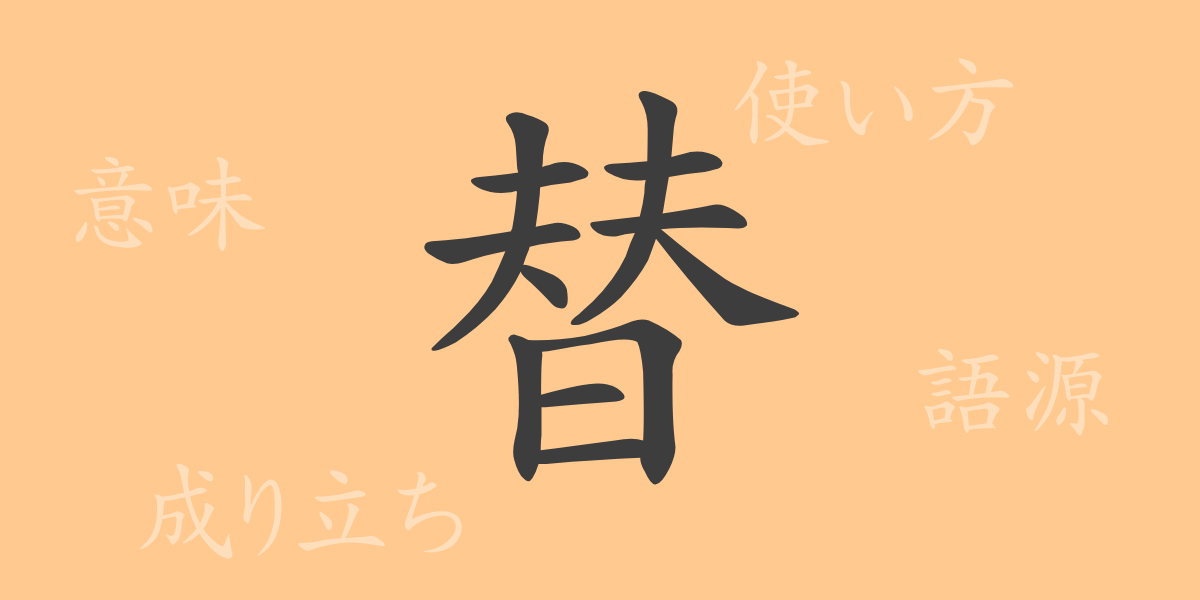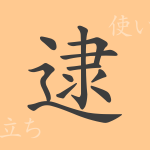The beauty of the Japanese language is greatly shaped by its complex and rich system of kanji characters, each with its own unique history and meaning. This time, we delve into the commonly used kanji ‘替’ (かえる/かわる) (kaeru/kawaru), exploring everything from its origins to its contemporary usage, including meanings, readings, stroke count, and radicals. Let’s explore the world of ‘替’ from various angles.
Origin of ‘替’ (かえる/かわる) (kaeru/kawaru)
The kanji ‘替’ originated in ancient China, initially symbolizing the act of tying threads together. It later evolved to mean exchanging or replacing something, hence ‘替える’ (to change). This character is used to represent the concept of replacing one thing with another and has been adapted to various contexts over time.
Meaning and Usage of ‘替’ (かえる/かわる) (kaeru/kawaru)
‘替’ has meanings such as ‘to substitute’, ‘to exchange’, and ‘to replace’. It is often used when something is being replaced with another. For instance, ‘交替’ (こうたい) (koutai) means taking turns, and ‘置き替える’ (おきかえる) (okikaeru) refers to replacing something in a different place or with something else. In Japanese, ‘替’ is commonly used to convey changes or updates.
Readings, Stroke Count, and Radical of ‘替’ (かえる/かわる) (kaeru/kawaru)
Here are the basic details of the kanji ‘替’:
- Readings: On’yomi is ‘タイ’ (tai), Kun’yomi are ‘か.える’ (kaeru) and ‘か.わる’ (kawaru).
- Stroke Count: Total of 12 strokes.
- Radical: 曰 (ふつかむり) (futsukamuri).
Phrases, Idioms, and Proverbs Using ‘替’ (かえる/かわる) (kaeru/kawaru) and Their Meanings
There are many idioms and proverbs that include ‘替’. For example, ‘時代替わり’ (じだいがわり) (jidai gawari) which means the changing of an era, ‘新陳代謝’ (しんちんたいしゃ) (shinchin taisha) representing the renewal of things, and ‘交替’ (こうたい) (koutai), meaning to take turns. These expressions are frequently used in everyday life and business, enriching the nuances of language.
Conclusion on ‘替’ (かえる/かわる) (kaeru/kawaru)
The kanji ‘替’, with its diverse meanings and applications, adds depth to Japanese expressions. Originating from the basic idea of exchanging or replacing something, this character has become indispensable for conveying the sophistication of language. Through this exploration, we have gained a deeper understanding of the rich history and meanings of ‘替’.

























